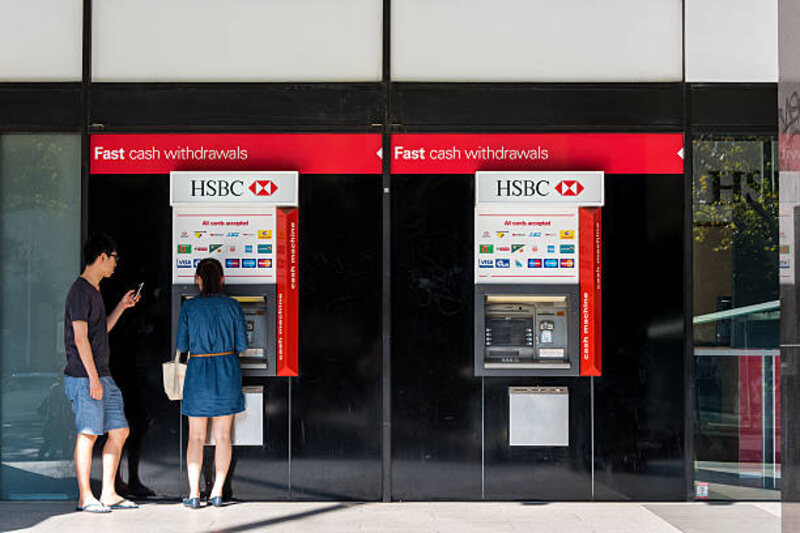Fractional Reserve Banking: A Simple Guide for the Modern Youth
Oct 11, 2023 By Rick Novak
Are you a modern youth looking to understand the complexities of fractional reserve banking? If so, you’ve come to the right place! Fractional reserve banking is an incredibly complex and often misunderstood financial system; however, this guide will give you an overview of what it’s all about. In today’s world, it is important for us as youth to have a basic understanding of our economic system so that we can stay informed on how their money works – or doesn't work. We are going to start by discussing the basics of fractional reserve banking and then discuss how it affects individuals like you every day. So if you want to know more about fractional reserve banking and discover why it’s necessary in our current society, keep reading!
What is Fractional Reserve Banking?
Fractional reserve banking is a financial system regulated by the government in which banks are required to keep only a certain percentage (or fraction) of their deposits on hand for customers' withdrawal requests. This percentage is known as the reserve requirement, and it's typically set at 10% for most commercial banks in the United States.
For example, if a customer deposits $100 into a bank, the bank is required to keep at least $10 of that money on hand for customer withdrawals. The remaining 90% ($90) can then be loaned out and used by other customers or invested in projects to generate more income for the bank.
How does it Work?
The process of fractional reserve banking is simple: when a customer deposits money into their bank account, the bank keeps a percentage of it safe in case the customer wants to withdraw any money. The rest is then loaned out to other customers or invested in projects. This allows banks to generate more income and profit from interest payments on loans, where they can charge borrowers interest on the loaned money. The interest payments then become additional income for the bank, which contributes to economic growth and development.
What Are the Implications of Fractional Reserve Banking?

Fractional reserve banking has both positive and negative implications. On one hand, it can help banks generate more income and support economic growth through lending and investments; however, it can also lead to economic instability.
Fractional reserve banking allows banks to loan out more money than what is actually deposited, meaning that if too many borrowers fail to pay back their loans, then the entire system could collapse due to a lack of funds. In times of financial crisis, fractional reserve banking can also cause rapid inflation as banks print more money in order to cover their losses.
The History of Fractional Reserve Banking:
Fractional reserve banking has been around for hundreds of years; however, it wasn't always regulated by the government. Before modern regulations were put in place, banks could choose to keep whatever percentage they wanted on hand; this led to a lot of instability and financial crises throughout history. In order to protect consumers and prevent economic meltdowns, governments began regulating fractional reserve banking and setting strict reserve requirements to ensure a more stable financial system.
Pros and Cons of Fractional Reserve Banking:
Pros:
- Allows banks to generate more income and support economic growth through lending and investments.
- Helps create a more stable economy by setting regulations on bank reserves.
Cons:
- Can lead to economic instability if too many borrowers fail to pay back their loans.
- Can cause rapid inflation in times of financial crisis when banks print money tocover their losses.
What Are the Different Types of Fractional Reserve Banks?

- Commercial Banks: These are the most common type of fractional reserve banks and usually have a reserve requirement of 10%.
- Savings and Loan Associations (S&Ls): S&Ls operate similarly to commercial banks but typically focus more on mortgage loans and other loan services. Their reserve requirement is generally lower than that of commercial banks, at2%.
- Credit Unions: Credit unions are typically non-profit organizations and have a reserve requirement of 3%. They focus on providing financial services to their members but also offer other services such as mortgages, insurance, and investment options.
Fractional Reserve Banking in the Modern World:
Fractional reserve banking has become increasingly important in our modern world due to the widespread availability of credit and debt. Even with strict regulations in place, fractional reserve banking can still lead to instability if banks are too aggressive with lending or investing. As a youth, it is important for you to understand how fractional reserve banking works and its implications so that you can make informed decisions regarding your own financial situation. Whether you're looking to save money or borrow money, understanding fractional reserve banking can help you make better decisions about how to handle your finances.
Regulations Surrounding Fractional Reserve Banking:
The Federal Reserve System (also known as the Fed) is responsible for setting and enforcing the regulations surrounding fractional reserve banking. They set the reserve requirement for commercial banks, S&Ls, and credit unions and monitor them closely to ensure that they are following all regulations.
Additionally, the Federal Reserve can also change the reserve requirements if needed in order to stabilize the economy or prevent financial crises.
How to Calculate the Required Reserves for a Bank?
The required reserves for a bank can be calculated by multiplying the total deposits by the reserve requirement. For instance, if a bank has $1 million in deposits and the reserve requirement is 10%, then they would need to keep $100,000 (10% of $1 million) on hand.
Conclusion:
Fractional reserve banking is an important concept to understand, especially when it comes to managing your finances. It is important to remember that fractional reserve banking can lead to economic instability and rapid inflation, so it's best to be aware of the regulations surrounding fractional reserve banking in order to make informed decisions about your own money. Knowing how reserves are calculated can also help you better understand the financial system and how it all works? So, when it comes to managing your finances, make sure that you are educated on the implications of fractional reserve banking and other financial concepts!








